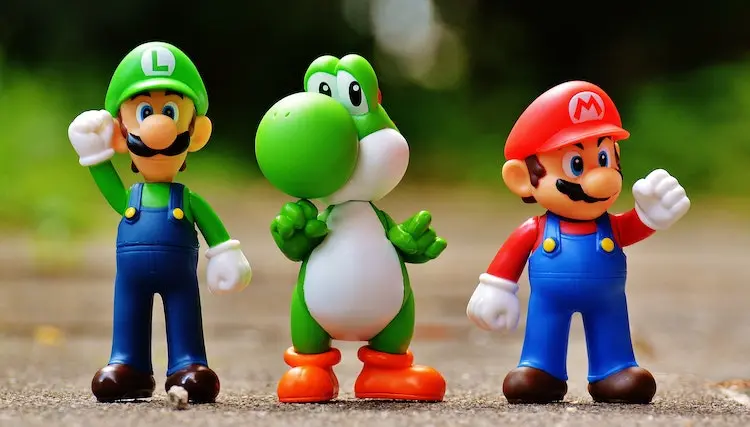How to Create Game Characters with AI
The world of gaming has seen radical transformations with the integration of technology, especially the rise of Artificial Intelligence (AI). The realms of AI and gaming converge, creating a synergy that has drastically enhanced game design and character representation. With this comes the question: How does AI influence the creation of intricate, vibrant, and life-like characters on our gaming screens? Dive deeper to uncover the intricate tapestry of AI in game design!
Evolution of Game Characters

Traditional Methods
Gaming has come a long way from its rudimentary beginnings. Recall the simple yet captivating pixelated charm of Mario or the blocky, geometric silhouettes of early game avatars like those in Atari classics. During these foundational years of gaming, the artistry and intricacy we’re accustomed to today were still in their infancy. Each character was born out of the imagination of designers who meticulously plotted out every pixel.
These initial characters, though less detailed by today’s standards, required significant manual effort from designers. This involved a rigorous cycle of conceptualizing, designing, redrawing, testing, and refining. Every pixel, movement, and interaction was deliberated upon, ensuring the character resonated with the intended gameplay and the player’s experience. Such dedication to detail, although time-consuming, laid the foundation for the immersive gaming worlds we cherish today.
Advent of AI in Character Creation
As technology rapidly evolved and leaped into the modern era, the wave of AI began to ripple through multiple sectors, making its indelible mark, most notably in the realm of gaming. Gone were the days when artists would painstakingly craft each aspect of a game character; instead, the dawn of AI heralded a new age of character design. The meticulous manual efforts of designers from the past began to dovetail with, and in many instances, were overtaken by sophisticated algorithms with the prowess to spawn incredibly intricate and diverse characters at an astonishing pace. This transition wasn’t merely about swift production.
The AI-driven character creation process breathed life into the characters in a way previously unimagined. With the integration of deep learning and neural networks, AI systems could analyze vast datasets comprising different art styles, character physiologies, and design principles. As a result, they could craft characters that were both unique and resonated with the evolving expectations of the gaming community.
Moreover, the advent of AI also gave birth to the captivating arena of generated photos. This realm, driven by generative adversarial networks (GANs), made it possible to produce hyper-realistic character images, capturing minute details, expressions, and nuances. Such precision blurred the lines between virtual and reality, offering gamers an immersive experience like never before.
The AI Character Creation Process
Understanding Neural Networks
Neural networks serve as the backbone of AI’s learning process. Picture a mini-version of the human brain operating inside your computer, capable of learning and decision-making. Neural networks absorb vast amounts of data, process this information, and then, based on their “learning,” produce game characters that often surpass human-designed counterparts in uniqueness.
Utilizing Pre-Trained Models
Leveraging pre-trained models is akin to using a sophisticated stencil for a masterpiece. These models, already nurtured on vast datasets, enable game developers to speed up the character creation process, offering a platform to generate characters and their realistic photos without starting from scratch.
Personalizing AI-Generated Characters
AI does a splendid job in crafting characters, but the beauty lies in the customization. Developers can merge AI’s efficiency with their creativity. It’s like molding clay into a statue, where AI provides the clay, and the artist gives it form. From deciding the character’s hair texture to their digital wardrobe and even expressions captured in generated photos, the synergy of man and machine creates magic.
Benefits of Using AI in Character Creation
Enhanced Creativity
AI offers a boundless sandbox of creativity. With its data-driven approach, AI can suggest and create game characters that a human mind might never conceive. A character with iridescent scales, wings of a butterfly, and the agility of a cat? With AI, the unthinkable becomes tangible.
Time-Efficiency
The clock never stops, especially in the fast-paced gaming industry. What used to take days or weeks using traditional methods now takes mere hours or even minutes with AI, especially when generating high-definition character photos.
Limitless Possibilities
AI doesn’t tire, and its imaginative spectrum doesn’t wane. With continuous learning and data processing, the potential for game character creation is perpetually expanding. Every iteration can be different, fresh, and captivating.
Potential Pitfalls and Solutions
Over-Reliance on AI
Rome wasn’t built in a day, and neither should game characters solely by AI. Over-dependence can lead to generic or soulless designs. Merging AI’s efficiency with human creativity ensures that the heart and soul of gaming remain intact.
Addressing Ethical Concerns
A pertinent concern in the age of AI is the potential misuse or unethical replication of real-world entities or personalities in games. Developers and designers need to walk the fine line of inspiration and infringement, ensuring respect and originality are maintained.
Conclusion
The gaming world stands on the cusp of an AI revolution. With the capabilities to create characters that are not only unique but backed by generated photos that breathe life into them, AI promises a future rich with innovation. But, as with all tools, the final masterpiece depends on the hands that wield it. Embracing the magic of AI while keeping the human touch alive is the key to the next chapter of gaming.

